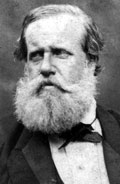The five-year-old Pedro de Alcântara succeeded to the throne of Brazil on the day when his father, Emperor Pedro I, presented his abdication to the General Assembly (7 Apr 1831). The young emperor was placed under the personal guardianship of José Bonifácio de Andrada e Silva, who provided him with a liberal education. The Provisional Regency (7 Apr 1831 - 18 Jun 1831) and later the Permanent Regency (18 Jun 1831 - 12 Oct 1835) were entrusted with executive authority. Under the Additional Act (1834), the Permanent Regency was replaced by the rule of sole regents, Diogo Antonio Feijó (12 Oct 1835 - 19 Sep 1837) and Pedro de Araújo Lima (19 Sep 1837 - 23 Jul 1840). In 1840 the anti-Regent agitation forced Araújo Lima to summon the General Assembly for a session on 23 Jul 1840. The Assembly declared that the emperor was of age and terminated the functions of Regent. Pedro II swore the oath as constitutional emperor and was crowned within a year (18 Jul 1841). The installation of Pedro as effective ruler did not bring immediate peace to Brazil. A series of secessionist movements which marred the years of Regency was not crushed until mid-19th century. In the 1840s Brazilian landowners increasingly developed coffee cultivation, which became a basis for stable economic growth. Slavery was a main component of the Brazilian economy, but popular agitation and commitment of Pedro II to abolish this institution opened a period of reforms. Balancing between the Conservatives and Liberals, which dominated Brazilian politics, Pedro promulgated the law effectively banning the slave trade (Law of Eusébio de Queirós, 4 Sep 1850). Advancing its foreign interests, Brazil helped overthrow the Argentine dictator Juan Manuel Ortiz de Rosas (3 Feb 1852) and intervened in Uruguayan affairs, precipitating war with Paraguay. The Paraguayan War (1864-1870), in which Argentina and Uruguay joined Brazil (Triple Alliance Agreement, 1 May 1865), was successful for Brazil, which gained vast territorial possessions at the expense of Paraguay. After the war Pedro entrusted the government to the Princess Regent Isabel and took his first long trip to Europe (1871-1872). As the next step in emancipation of slaves, Princess Isabel on behalf of her father enacted the Law of the Free Womb (28 Sep 1871) declaring free all children to be born to slave mothers. In the 1870s, a serious conflict between the government and the hierarchy of the Roman Catholic Church developed over the latter's policies, mandated by the Vatican, to combat Freemasonry; the government brought indictments against some bishops. The condemnation and subsequent pardon of two bishops (1873-1875) undermined the support of clergy for the imperial government. Pedro made his second trip to Europe, with a visit to the United States, in 1876-1877. Increasingly inspired by democratic ideas, he promulgated a law (1881) introducing direct parliamentary elections for Brazil. The process of abolition of slavery intensified in 1884 when the provinces of Ceará and Amazonas decreed the emancipation of all slaves; in 1885 all slaves over 60 years of age were emancipated throughout the Empire. As in 1871 the emperor preferred to take another long trip to Europe while Princess Isabel was left in charge of government to introduce the final law on abolition of slavery, the Golden Law (13 May 1888). However, on his return to the country Pedro found that disappointed slave owners, reluctant clergy and the military formed a league advocating a republican regime. On 15 Nov 1889 the military staged a coup in Rio de Janeiro. At 23:00 on 15 Nov 1889 the Emperor convened the Council of State in order to make arrangements for a new government. During the meeting, news of the proclamation ending the monarchy were received. The meeting ended at 03:00 on 16 Nov 1889 and later in the day Pedro agreed to leave Brazil for Europe, where he died two years later. [1] |

